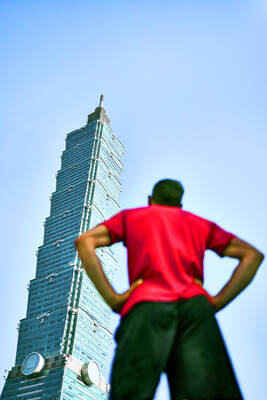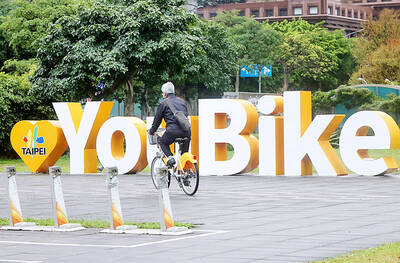A defense official has explained the military’s camouflage patterns for its armored fighting vehicles, artillery, ships and aircraft.
Distinct schemes designed to blend into different environments are key, the official said, speaking on condition of anonymity.
Tactical markings are painted to aid in identification and for command and control, but with low visibility colors to decrease the chances of detection by the enemy, the official said.

Photo courtesy of Youth Daily News
The army’s ubiquitous green, brown and black camouflage pattern — applied to most weaponry, equipment and installations — is an offshoot of the US’ Woodland Pattern, he said.
The pattern was chosen as the service standard to streamline logistics and maintenance, he added.
One exception is the CM-32 “Clouded Leopard” developed by the Chungshan Institute of Science and Technology, he said.
It has been painted in a new “digital” camouflage in light green, forest green, brown and black, except for those vehicles to be used by the army’s military police brigade, as such distinctive markings would be detrimental to one of its duties, presidential protection, the source said.
Another new four-color camouflage is being used on ground-based cruise missile launcher systems and other new pieces of equipment, he said.
Surface ships are painted gray, because the color hides the shape of the hull against the ocean, while submarines are painted black, because it obscures the silhouette of a submerged boat from observers above it, he said.
The air force also uses gray tones — or “air superiority camouflage” — for its fighters, maritime patrol aircraft and helicopters, he said.
However, the Lockheed C-130 Hercules has a unique scheme with gray paint on top and earth colors on its belly, which optimize camouflage against ground-based and aerial observation respectively, he said.

US climber Alex Honnold is to attempt to scale Taipei 101 without a rope and harness in a live Netflix special on Jan. 24, the streaming platform announced on Wednesday. Accounting for the time difference, the two-hour broadcast of Honnold’s climb, called Skyscraper Live, is to air on Jan. 23 in the US, Netflix said in a statement. Honnold, 40, was the first person ever to free solo climb the 900m El Capitan rock formation in Yosemite National Park — a feat that was recorded and later made into the 2018 documentary film Free Solo. Netflix previewed Skyscraper Live in October, after videos

Starting on Jan. 1, YouBike riders must have insurance to use the service, and a six-month trial of NT$5 coupons under certain conditions would be implemented to balance bike shortages, a joint statement from transportation departments across Taipei, New Taipei City and Taoyuan announced yesterday. The rental bike system operator said that coupons would be offered to riders to rent bikes from full stations, for riders who take out an electric-assisted bike from a full station, and for riders who return a bike to an empty station. All riders with YouBike accounts are automatically eligible for the program, and each membership account

A classified Pentagon-produced, multiyear assessment — the Overmatch brief — highlighted unreported Chinese capabilities to destroy US military assets and identified US supply chain choke points, painting a disturbing picture of waning US military might, a New York Times editorial published on Monday said. US Secretary of Defense Pete Hegseth’s comments in November last year that “we lose every time” in Pentagon-conducted war games pitting the US against China further highlighted the uncertainty about the US’ capability to intervene in the event of a Chinese invasion of Taiwan. “It shows the Pentagon’s overreliance on expensive, vulnerable weapons as adversaries field cheap, technologically

NUMBERs IMBALANCE: More than 4 million Taiwanese have visited China this year, while only about half a million Chinese have visited here Beijing has yet to respond to Taiwan’s requests for negotiation over matters related to the recovery of cross-strait tourism, the Tourism Administration said yesterday. Taiwan’s tourism authority issued the statement after Chinese-language daily the China Times reported yesterday that the government’s policy of banning group tours to China does not stop Taiwanese from visiting the country. As of October, more than 4.2 million had traveled to China this year, exceeding last year. Beijing estimated the number of Taiwanese tourists in China could reach 4.5 million this year. By contrast, only 500,000 Chinese tourists are expected in Taiwan, the report said. The report